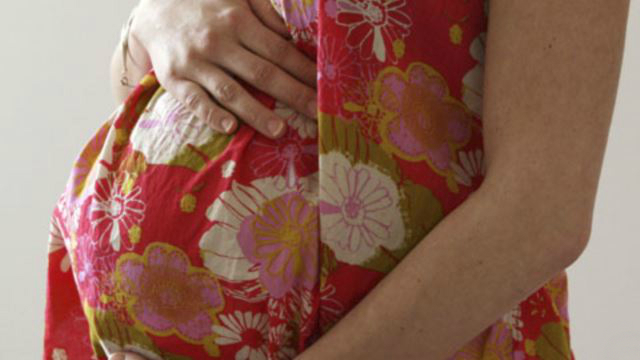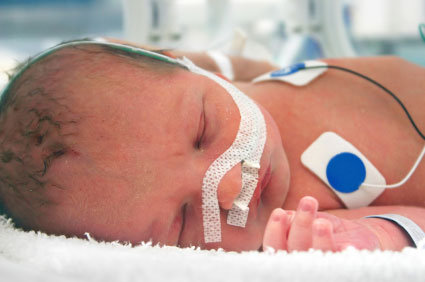
During pregnancy, you may find yourself dealing with physical or emotional issues that are new to you. Aromatherapy can be a valuable ally during this time of learning.
Pregnancy is a special time in a woman’s life; from the moment of conception, the growing baby is entirely dependent on its mother. Pregnancy is a time of physical and hormonal changes and of emotional and psychological preparation for motherhood. Making use of sensual oils such as rose and neroli can quell your anxieties and instill confidence.
The demands of pregnancy often result in a number of minor ailments, from piles to edema. Careful selection of diluted essential oils can provide relief from many of these; for example, you can ease nausea by inhaling spearmint oil or relieve leg cramps with a gentle massage using cypress and geranium. Exhaustion and aches and pains can be relieved by aromatic bathing. Always consult your doctor before using oils.
Carefully selected oils can combat many of the minor ailments of pregnancy and prepare you for the challenge of labor.
Spearmint:
A milder and sweeter alternative to peppermint, spearmint oil can be used to chase away feelings of morning sickness.
Rose:
A wonderfully feminine oil for use in aromatic bathing, rose oil is grounding and calming. It combines well with lavender and geranium.
Patchouli:
This oil helps to reduce water retention, treat swollen ankles and relieve constipation.
Lavender:
A versatile cure, lavender is cooling, balancing and calming. Vaporize to combat exhaustion or relieve muscular tension is a gentle massage.
Ylang Ylang:
Ylang ylang eases anxiety before and during labor. It is a warming and sensuous oil that promotes maternal bonding.
Geranium:
This oil relieves water retention, hemorrhoids and varicose veins.
Frankincense:
Add this oil to your massage blends to help prevent stretch marks.
Mandarin:
This gently cheerful oil combats morning sickness and relieves flatulence.
With a little care, you will find the benefits of aromatherapy are as numerous during the months of pregnancy as at any other time.
Take extra care when using oils during pregnancy. It is best to consult a qualified aromatherapist and select oils carefully as some can be hazardous.
- Avoid self-treatment during the first trimester.
- Dilute your blends to half their usual amounts and add to a vegetable based carrier oil.
- Even with familiar oils, perform a patch test first.
- Vaporizers are a safe method as there is no contact with the skin.
- Some oils may be harmful, including basil, juniper, thyme, hyssop, clary sage, cinnamon, clove, marjoram, sage, jasmine and myrrh. In the first trimester, avoid Cedarwood, rosemary, peppermint and rose.
- A long, warm, aromatic soak in the bath at the end of the day can provide welcome relief for weary muscles and swollen ankles while relaxing you for bedtime.
- Keep the bathwater warm rather than hot during pregnancy and remember to dilute any oil that you use in a little carrier oil or milk before swirling it into the running bathwater.
- Gentle massage is beneficial during pregnancy, especially if administered by a loved one. It eases aches and pains in the lower back and legs, soothes fatigue and tension, benefits swollen ankles and feet, and reduces the risk of stretch marks.
- Avoid deep pressure or percussive strokes, replacing these with gentle figure-of-eight or circular strokes.
- Your recipient might be more comfortable lying on her side or sitting astride a kitchen chair with a pillow to rest her arms and head on.
Suitable oils to use include lavender, to release muscular tension; neroli, to reduce stretch marks; and chamomile, to relieve insomnia.
Also herbal remedies can be taken to boost health and treat a number of pregnancy-related ailments, from morning sickness to labor pains. Herbal medicine can help boost your health during pregnancy and easy many of the common complaints encountered during pregnancy, labor and breastfeeding.
Some herbs act as tonics, nourishing your changing body and that of your developing baby, while others can bring relief from pregnancy ailments such as morning sickness, digestive problems and insomnia. Some women are prescribed herbs during labor, once contractions have begun, as certain plants can help the labor progress or relieve pain.
Some herbs are beneficial after birth, to aid the healing process, especially after stitches or a Caesarean section.
Choosing the right herbs depends on your individual circumstances. Many herbs are safe to use as long as they are prescribed by a qualified medical herbalist. Herbal teas are a popular means of taking herbal remedies during pregnancy. However, many culinary herbs with medicinal qualities can be added to cooking.
Certain herbs are not suitable for pregnant or breastfeeding women, or need to be limited to specific doses. For this reason, it is important to seek professional help.
It is best to avoid herbs in the first trimester of pregnancy, apart from very gentle ones, such as chamomile and ginger.
Some herbs can stimulate the uterus, and therefore could trigger a miscarriage or stillbirth, while others may be toxic to the developing baby. In particular, you need to take care with Chinese herbs as some of these contain steroids and may even cause jaundice. If you experience any discomfort when taking an herbal remedy, consult a doctor without delay.
For gentle remedies during pregnancy, it is fine to use herbs in cooking or herbal teas. However, stronger preparations should only be prescribed by a qualified herbalist.
Ginger:
Ginger tea or biscuits can ease the nausea of morning sickness. Sip small amounts of the tea throughout the day for best results. You can also add freshly grated ginger to a stir-fry to boost circulation.
Cabbage:
Cabbage helps reduce water retention. Wrap the boiled, cooled leaves around ankles to ease swelling and cover swollen breasts with cool, cooked cabbage leaves to alleviate the pain.
Raspberry leaf:
This herb is ideal when you’re preparing for birth. It softens tissues along the birth canal to aid the delivery and strengthens contractions of the uterus, speeding up the birth. Only take raspberry leaf in the last eight weeks of pregnancy, not before as it may trigger a premature labor.
Chamomile:
Chamomile is a gentle herb that can be used throughout pregnancy. Taken as tea, it has a soothing action that can ease wind, bloating and constipation, but don’t drink more than two cups a day. Drinking chamomile tea in early labor also helps to calm your nerves.
Coriander:
This common herb can prepare the mother’s body for labor. Try eating three or four springs in a salad or make a tea from the seeds.
Cramp bark:
This herb acts as a muscle relaxant thanks to its antispasmodic and sedative properties. Taken as a decoction or tincture, it can help with painful contractions during labor. Do not take cramp bark during the actual pregnancy as it stimulates the uterus.
Garlic:
Garlic is an extremely popular all-purpose herbal remedy. You can add this versatile ingredient to your cooking while pregnant to help keep your blood pressure stable. Garlic also boosts your immune systems and lowers the risk of blood clots. It can even help the growth of the placenta and developing baby, as it aids the healthy functioning of your circulation.
Liquorice:
Chewing liquorice sweets can help to alleviate feelings of nausea. It can also help to settle a sluggish digestive system when eaten, or taken as a tea.
Source: yahoo voices











 Load Up on ‘Super Foods’, Find Time to Exercise, Consider Breastfeeding to Help Shed Excess Pounds
Load Up on ‘Super Foods’, Find Time to Exercise, Consider Breastfeeding to Help Shed Excess Pounds